In northern Germany, the city of Friedrichstadt was founded by religious refugees from Holland in 1621 – and it shows to this date. On a weekend break or even just a day trip from for instance Hamburg or Lübeck, you find yourself amidst cute little gabled houses and can even enjoy a canal cruise just like in Amsterdam.
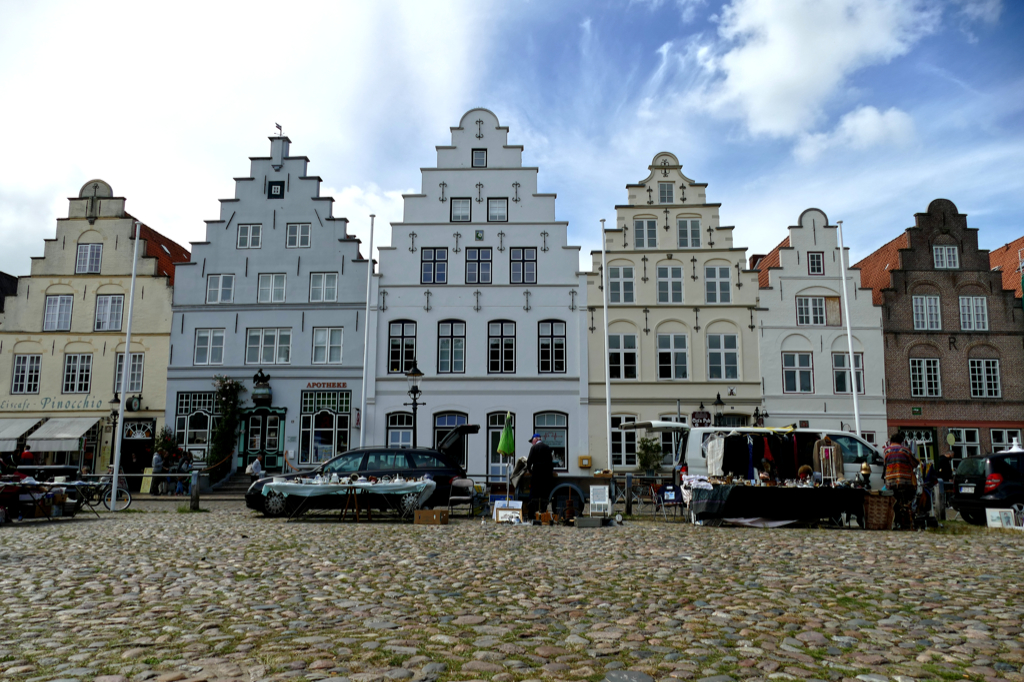
It’s a shame that Germany just seems to stand for beer and cuckoo clocks and Gesundheit while there are so many beautiful places, quirky phenomenons, and natural wonders to discover.
On my blog, I made it a mission to introduce those highly interesting’n’intriguing places that are still under the international visitors’ radar.
Why There Is a Dutch City in Northern Germany
Yes, I know, you can find certain places rebuilt thousands of miles away. There are replicas of particularly beautiful and interesting places at Disney. The Chinese just copy the Eiffel Tower or entire European cities like Hallstatt back home in China.
Friedrichstadt, however, is not a tacky theme park-ish copy. Here, the Dutch heritage is the real deal.
It all began with a win-win situation: In the early 17th century, Duke Friedrich III of Schleswig-Gottorf needed settlers who understood drainage and land reclamation. At the same time, many Dutch people had to leave the Netherlands because of their faith. The strict Calvinists persecuted the far more liberal Remonstrators. Hence, the Duke invited skilled Dutch traders and craftsmen to northern Germany. They even were allowed to keep Dutch as their official language.
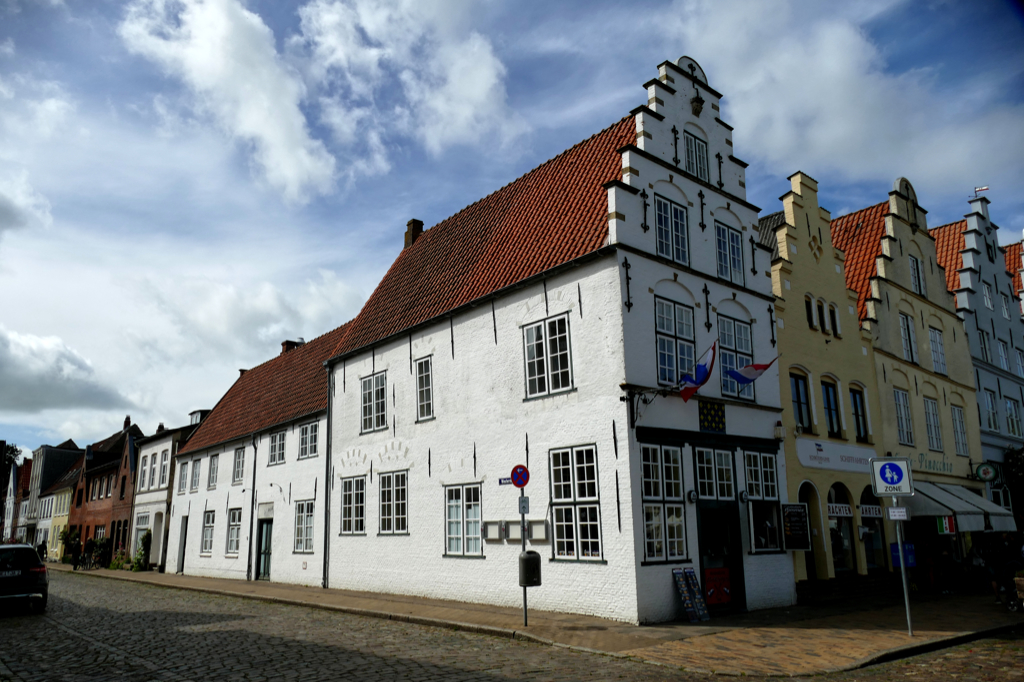
They constructed a town in the swampy lowlands between the Eider and Treene right in the middle of the 30-year war, one of the most destructive wars in European history. I think I don’t need to explain why they called the place Friedrichstadt, hence Friedrichstown, do I?
To this date, Friedrichstadt’s market square is lined with stately Dutch townhouses. It might come to your surprise that there is no church building there. Well, as the basis for an equal coexistence of different religions, all churches are on side streets. This way, no faith is represented more prominently.
To this date, the world’s only Remonstrant church outside of the Netherlands stands in Friedrichstadt.
Between Creeks And Meadows
Friedrichstadt lies rather isolated. I guess that’s why it has to be extra beautiful to attract visitors. And the city and its inhabitants are accomplishing a great job in doing so. Although it’s located about 15 kilometers east of the coast, it’s a very popular destination for a lovely day out or even a weekend trip. Getting there by train, you get off at a platform in the middle of nowhere. Walking about ten minutes between creeks and meadows, you get to the most charming town center.
Obviously, you can explore the town walking, and there is something beautiful to discover at every corner. Although I’m introducing the most significant houses as well as the different churches in this post, you actually don’t need necessarily a guide. Just walking around with your eyes open, you’ll spot many interesting, charming, and quirky things.
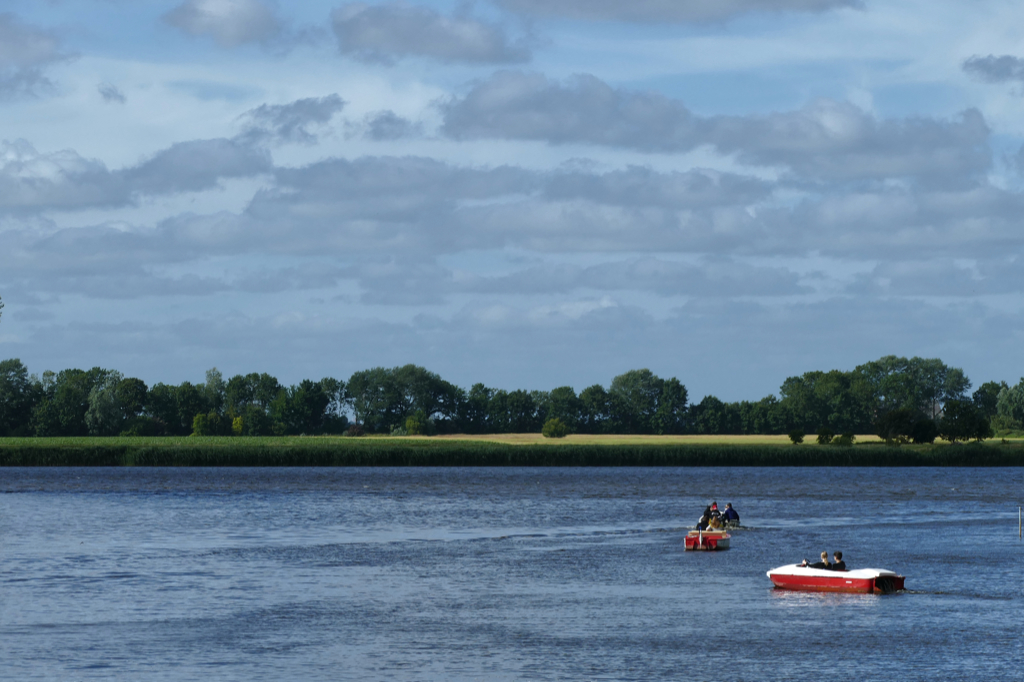
However, as you are out and about in Friedrichstadt, you will quickly notice that everything revolves around water. This precious little gem lies on the rivers Treene and Eider. While the first-mentioned runs inland, the Eider flows into the North Sea about 15 kilometers south of the town. These two rivers provide the waters for the man-made canal system of Friedrichstadt.
Houses of Friedrichstadt
“There are so many beautiful things to see, right?” the elderly lady beams at me. She has to push her husband in a wheelchair over Friedrichstadt’s cobblestones, and still, she is enjoying her visit to the max. The serenity and beauty of Friedrichstadt do that to you. It’s a lazy summer afternoon, the sun is shining, and there is beauty all around us. I smile and nod my head and wish them a nice afternoon.
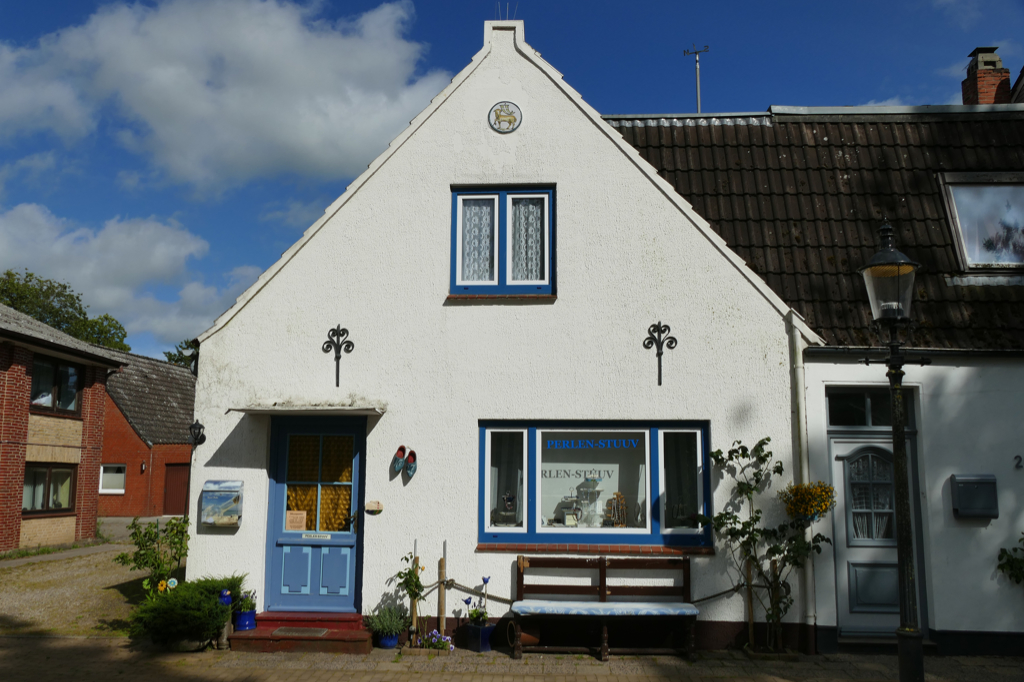
The lady was absolutely right, there are so many beautiful things to see – mainly the old houses. And while all of them are pretty, there are some that have a special story to them and therefore, I’m introducing them below.
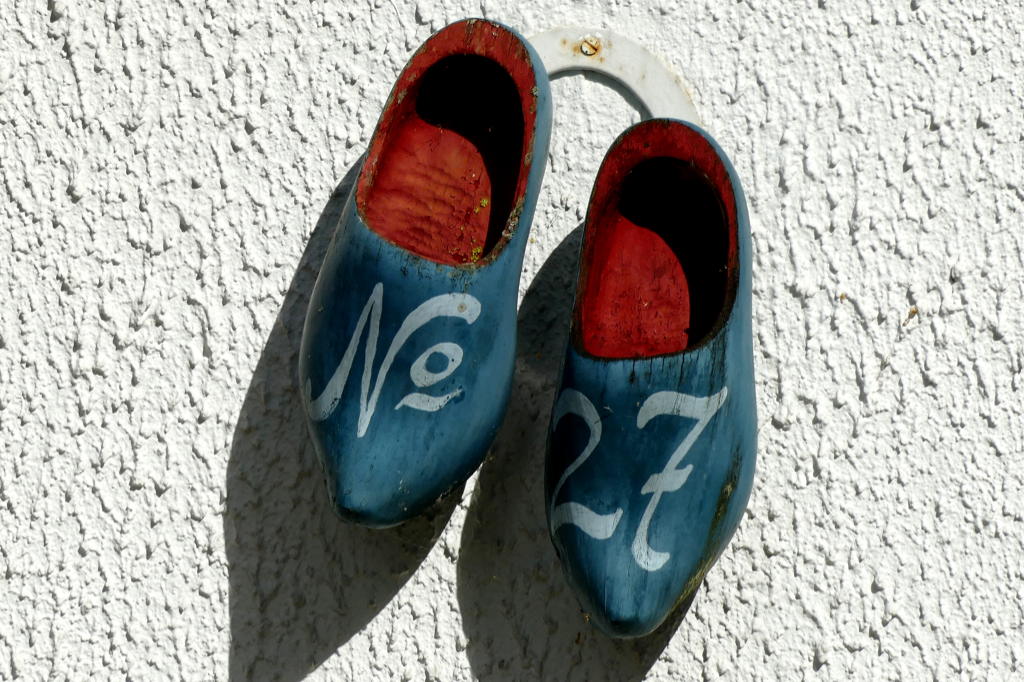
Some of those old houses are so crooked that you might fear they’ll overbalance any minute. But fear you not, this is no misconstruction. On the contrary, the builders were smart and thorough and the bending walls were built with a purpose. Because of the high water level, it would have been too risky to supply the houses with cellars. Hence, the storage space was above the living area under the roof. To get the goods up there more easily by using a pulley, the gable was tilted forward.
First House of Friedrichstadt
The founding stone of Friedrichstadt’s first house was laid on a piece of land in the southwest corner of the city in 1621.
Eventually, between 1734 and 1846, the synagogue of the Israelite community was located in this spot. As the Jewish community reached 420 members, a new synagogue was needed. It was built at the inland port.
In 1850, the original building was destroyed during the Three Years’ War, a conflict between Denmark and the German Confederation. It was replaced by a simple two-storey residential building in 1852.
Albeit the spot is of historic significance, the house is probably one of the most unspectacular constructions in all of Friedrichstadt.
Five-Gabled House
This house was actually built for the city founder Duke Friedrich Ill. Building materials were imported from the Netherlands. Eventually, the stately building served as accommodation for honorable personalities.
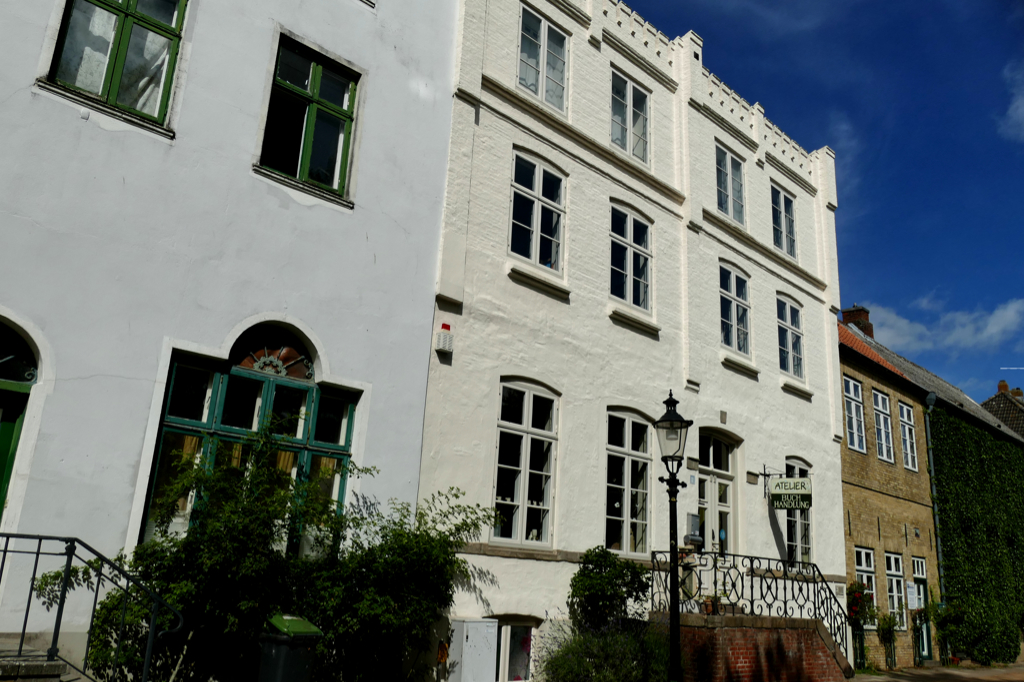
In 1649, the Catholic community acquired the house. Services were held in a converted adjoining building until the 19th century. In 1837, the façade was completely altered and finally, it was modified into a two-family house in 1931.
Paludanus House
The Remonstrant preacher Godefridus Paludanus and his son-in-law Gerrit Martens commissioned this beautiful mansion in 1637.
The two gables were united under one roof in 1840. At that time, the gable with the obelisk on top, as well as an attic, were added. Next to the exquisite rococo door is a walled-in cannonball from the bombardment during the Three Years’ War in 1850.
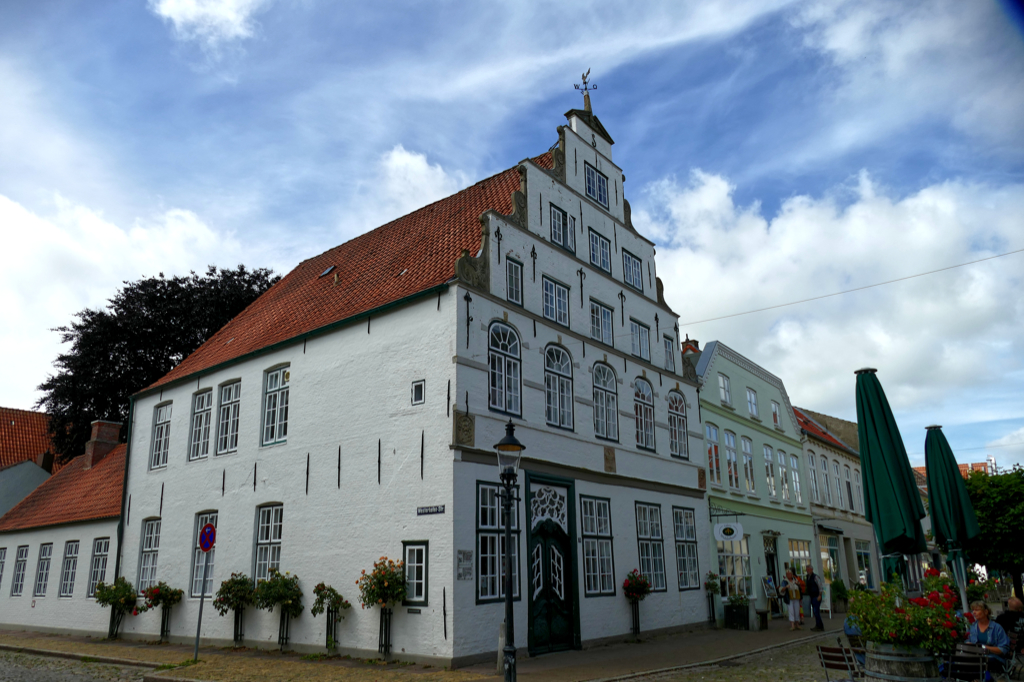
Today the Danish minority’s cultural institution Sydslesvigsk Forening owns the building.
This might be a good moment to explain briefly the special status of Danes in the German Federal State of Schleswig-Holstein.
Digression: Danes in Schleswig-Holstein
Today, the border between Schleswig-Holstein in Germany and Denmark is hardly noticeable. Many people on both sides speak German and Danish. Around 50,000 German citizens are part of the Danish minority. But why?
Well, Danish kings ruled first over Schleswig and eventually also over Holstein from 1460. Increasing nationalism in the 19th century shattered the good relationship between Germans and Danes and finally led to the Schleswig-Holstein uprising in 1848. After the German Confederation won the German-Danish War in 1864, the duchies of Schleswig and Holstein became provinces of the Kingdom of Prussia.
However, after the German defeat in WWI, the tables turned. In 1920, a referendum was held to determine today’s border: North Schleswig voted for Denmark while South Schleswig voted for Germany. Yet, minorities remained on both sides.
Hence today, the Danish language and culture are part of everyday life in Schleswig-Holstein. The South Schleswig Association, Sydslesvigsk Forening in Danish, organizes a wide range of cultural activities. Also, they maintain strong bonds with Denmark and other Nordic countries.
A private school system preserves the Danish language. Also, the political participation of the Danish minority is ensured by a special law.
Two-Gabled House
So after we made the reason for those fluent passages between Denmark and this part of Germany clear, let’s continue with our stroll through Friedrichstadt. The next amazing building is right across the street from the Paludanus House. The two gabled house dates back to 1624.
Just like the above-introduced Crooked House, it was also constructed as a warehouse. Therefore, it bends slightly forward to give access to the gable. The attic still bears witness to the large quantities of loads that were stored here. Actually, it was used to store grain, coal, and other goods until the 20th century.

In the 19th century, the two parts of the building got a mutual, centrally located entrance area in a neo-Gothic style.
However, the two parts were separated again as part of the urban redevelopment measures in the 1980s. This way, elements of the time of the original construction were revamped.
Today, the house is privately owned, and the owner runs a tailor’s atelier.
The Crooked House
Back in the day, construction first took place on corner plots. Therefore, the so-called Crooked House was the town’s second building that still exists. It dates from the early 1620s, obviously. The west gable, which is inclined far forward, is its most remarkable feature.

Older photos show a hatch on the upper floor. Since the upper part of the house was used for storage, the gable is slanted forward to make it easier to hoist goods upwards. Although this can be seen in many houses from the founding period of Friedrichstadt, no other is bending as extreme as this one.
Guesthouse Kajüte
This historic building was rebuilt as a guesthouse on the foundations of a previous building in 1876.
At that time, there were 19 innkeepers in Friedrichstadt. Especially during the twice-yearly horse markets when cattle traders came travelling from far away, business was great for all of them.
A stable for the carriage horses was on the east side of the building. Its former shape can still be seen on the façade.
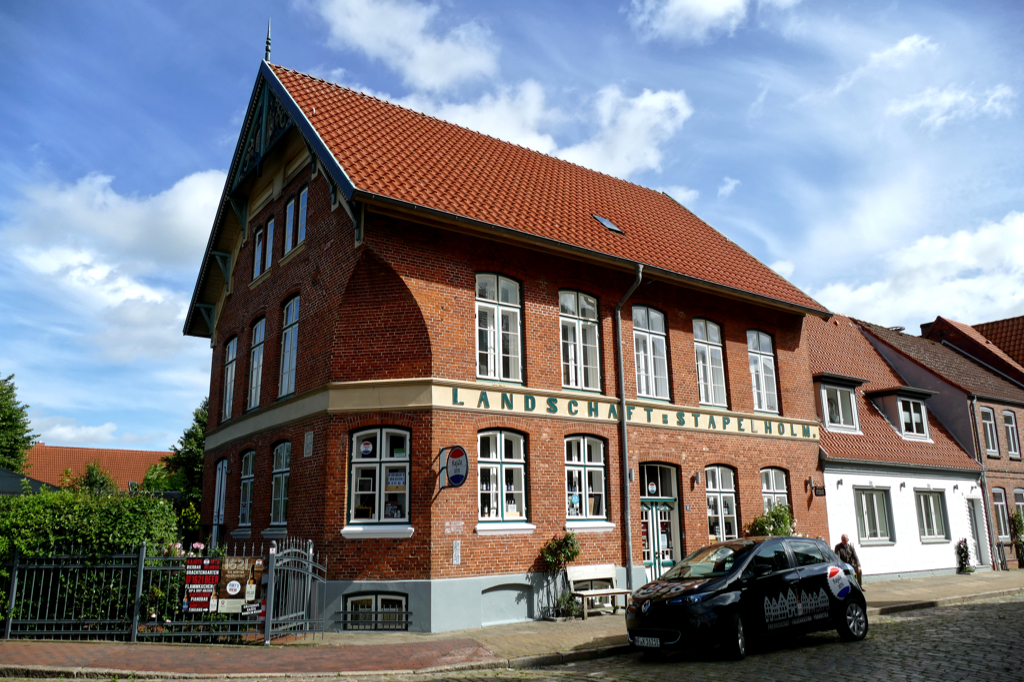
Already in ye olden days those business people knew: It’s all about location, location, location. Therefore, the building was strategically located on the road to the neighboring region Stapelholm.
Former Mustard Factory
The beautiful building across the street from the Guesthouse Kajüte is built in the style of the traditional North German brick Gothic.
In the late 19th and early 20th centuries, there were numerous manufacturers and small factories in Friedrichstadt. Above all, chemicals and fertilizers were produced, but also everyday goods such as beer, flour, and soap.
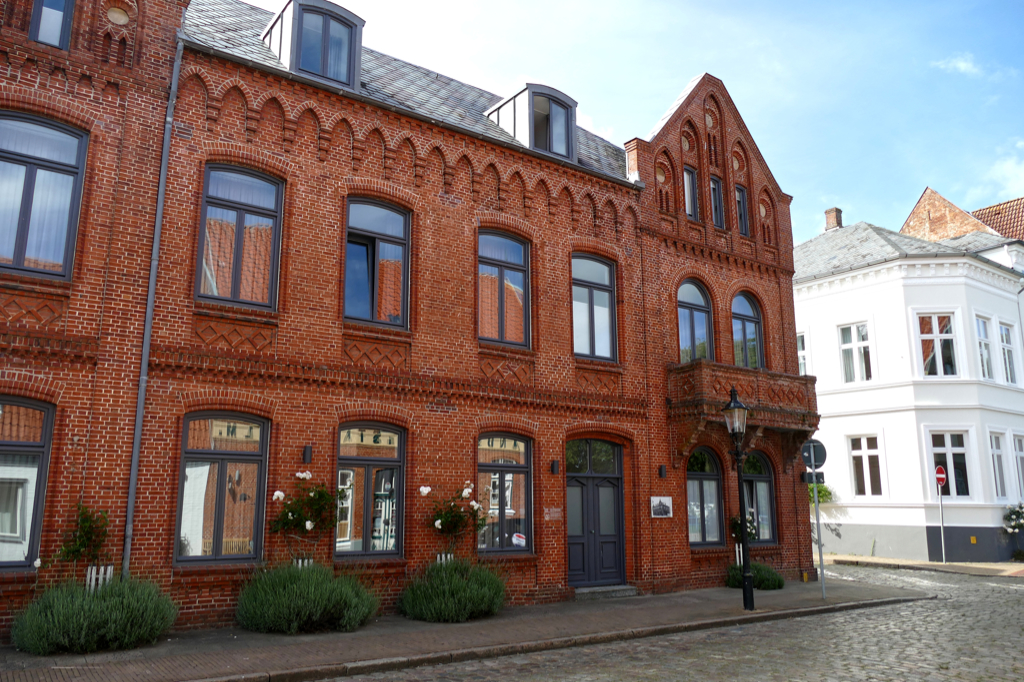
Friedrichstadt’s mustard was well-known far beyond the region. In the backyard of this structure built in 1895 were the production facilities, the bottling plant, and the distribution department of Güntraths Senf und Essig, hence, mustard and vinegar.
Old Mayor’s house
Unfortunately, little is known about the former Mayor’s House. The roof frieze of the light beige brick building is decorated with beautiful insignia in the shape of large deer and lion heads in bold colors.
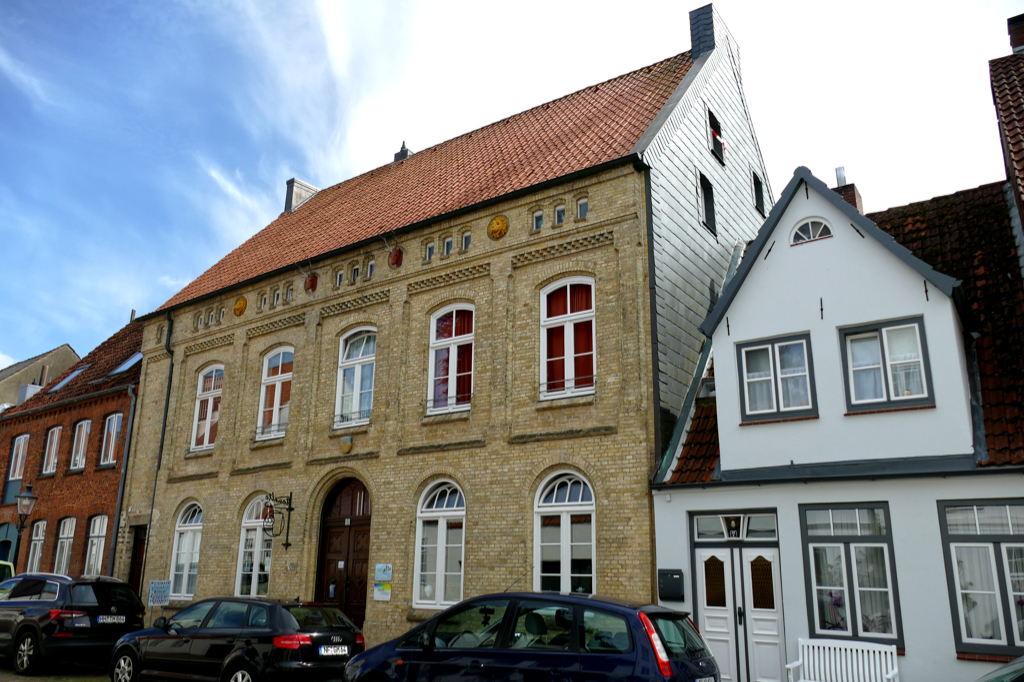
Quaker Assembly House
Just a few steps from the stately mayor’s house is a far more modest building. It is the former assembly house of the Quakers of Friedrichtstadt.
In 1648, George Fox from Leicestershire founded the Religious Society of Friends, commonly known as the Quakers, in England. A Quaker community was established in Friedrichstadt only 14 years later. Its members rejected church hierarchy, sacraments, oaths, and military service. On the other hand, equality, freedom, and social responsibility were the highest principles.
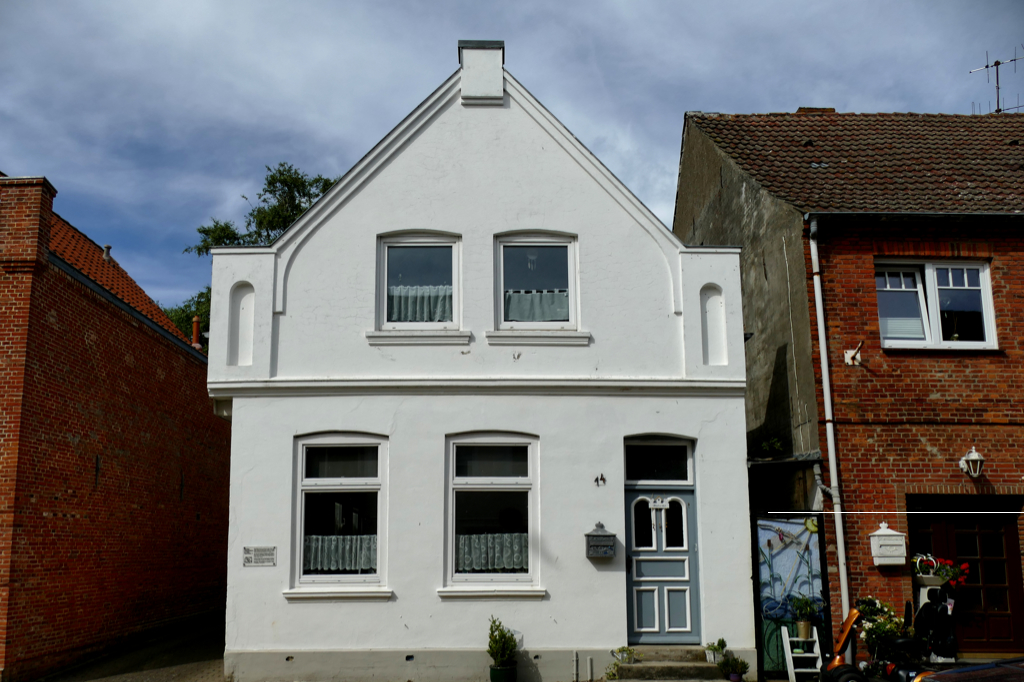
In 1677, Hendrick Siemens built the first meeting house for Quakers on German soil. It was a building that preceded today’s house at Westerhafenstrasse 14.
The small community of about 10 families has existed for almost 70 years.
In 1713, during his stay in Friedrichstadt, Tsar Peter the Great attended a Quaker service at his own request.
Until the 19th century, the house remained in the possession of the London Quaker community
Market Pump
One of Friedrichstadt’s most popular icons is the market pump with the Gothic-style fountain house. It was built by the architect Heinrich Rohardt in 1879.
The front of the fountain house is decorated with four verses about water written by Klaus Groth in Low German.
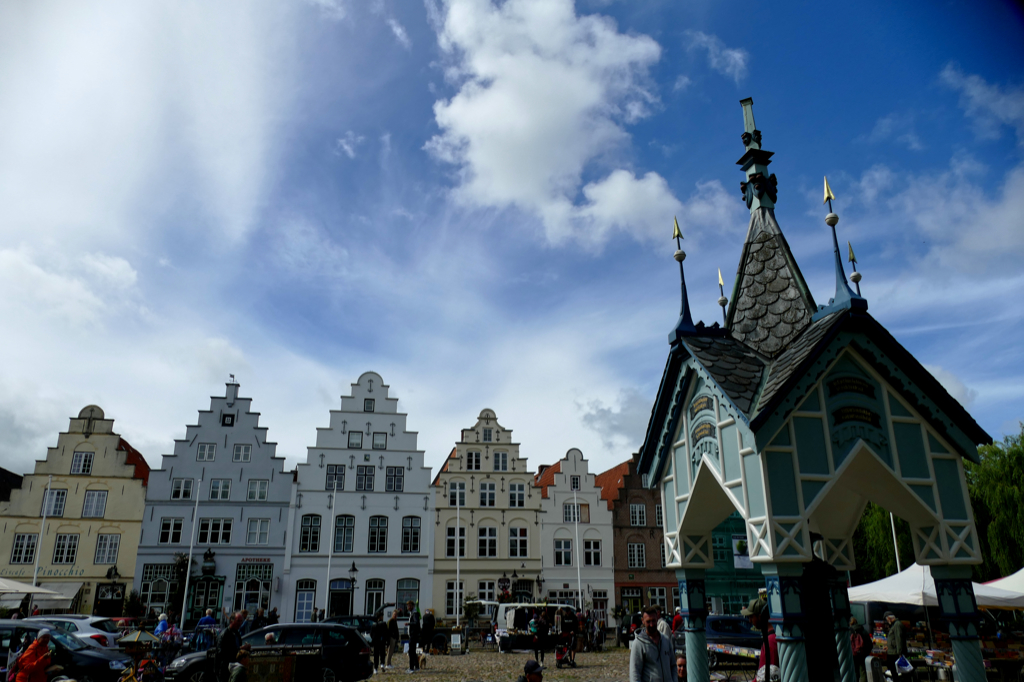
On both sides of the pump are thick, railing-like iron bars to which animals were tied during the horse and cattle markets in the olden days. Today, especially kids enjoy working the heavy pump.
House Insignia
House insignia have been a lovely tradition in the Dutch town since 1621. They are small reliefs above the houses’ front doors. Often designed in bold colors, those little pictures reveal something about the former builder or resident of the building.

Some of the insignia that used to decorate houses that were destroyed in 1850 have been preserved and later reintegrated into new buildings.
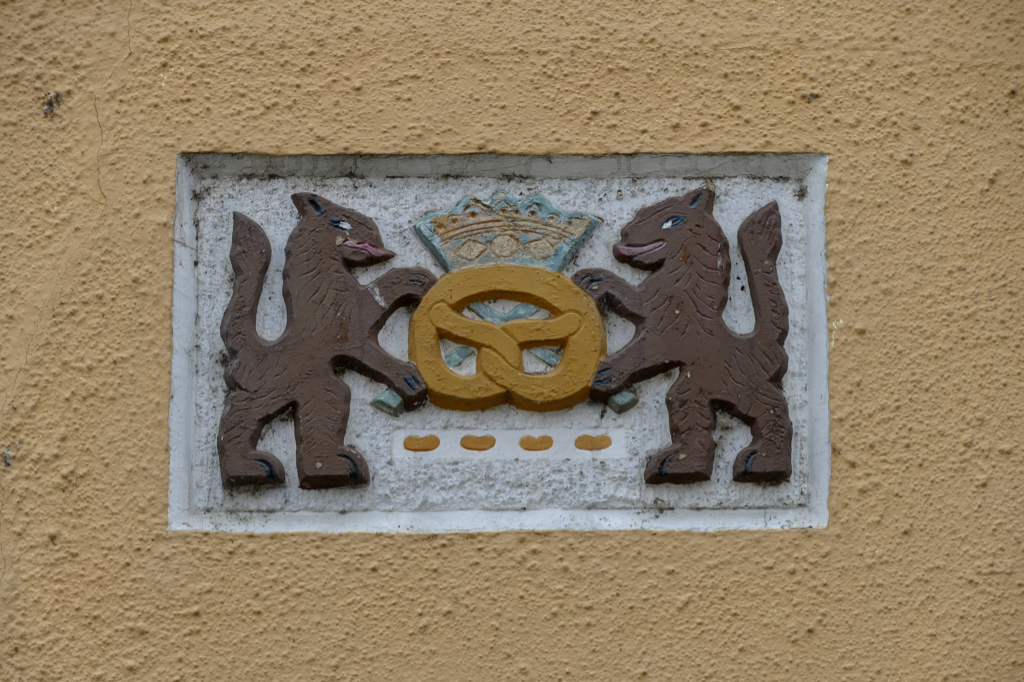
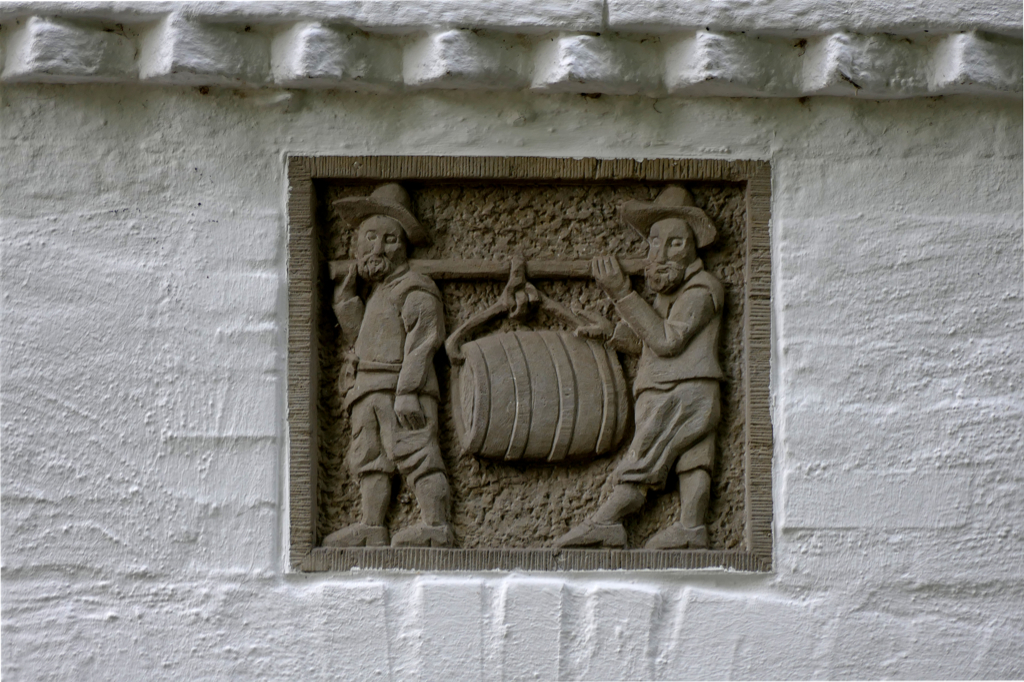
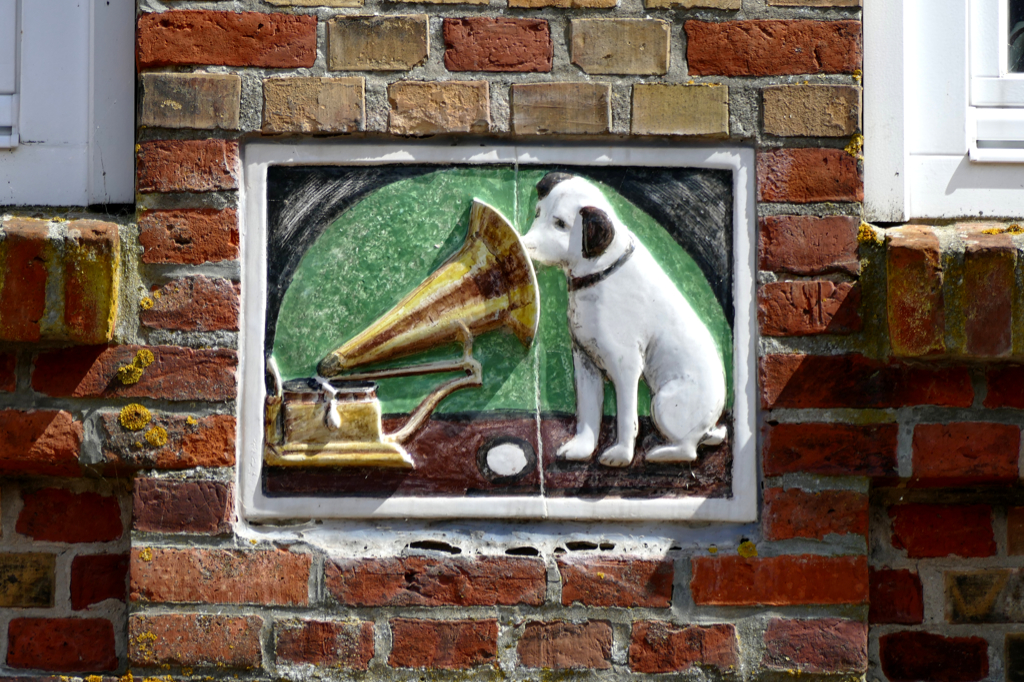
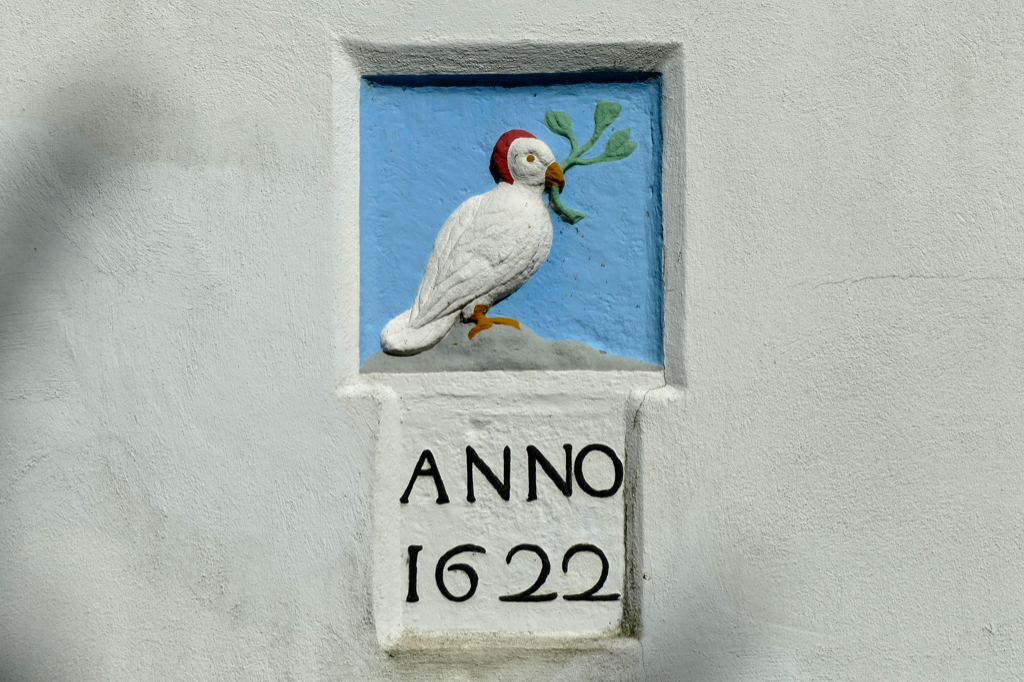
Churches of Friedrichstadt
For a rather small town, Friedrichstadt has a remarkably high density of churches. This is of course due to the fact that many religious communities settled here in addition to the founding Remonstrants. Here, they were granted freedom of religion. To this date, Friedrichstadt is known as the City of Tolerance. There are four functioning churches in total:
Remonstrant Church
In 1620, Frederick III. of Schleswig-Gottorf promised new settlers land and tax privileges and most importantly, freedom of religion. Dutch remonstrants gladly took this chance since the Synod of Dordrecht had banned their faith in their homeland the previous year.
The first Remonstrant church was consecrated in 1625. To this date, you can see gravestones of the first generation of immigrants in the adjacent cemetery.

When the first Jews settled in Friedrichstadt in 1675, the Remonstrant community allowed them to use the church as long as they did not yet have their own synagogue. They could also set up their own ritual bath there. Sadly, this has not been preserved.
To this date, the Remonstrant Church in Friedrichstadt is the only one of its kind in the German-speaking world. The Remonstrant congregation is still using the building as well as the community center and the cemetery. Guest preachers from the Netherlands regularly hold services in Dutch.
Mennonite Church
Also, another rather peculiar congregation has its house of worship in Friedrichstadt. The Danish Mennonite Church is an annex to the Alte Münze city museum. There is a Mennonite cemetery right behind the church.
Mennonites began to settle in Friedrichstadt just two years after the foundation of the town. They came as religious refugees from the Netherlands but also from nearby Eiderstedt. There, communities had existed since 1560.
Together with Lutheran Protestants, Remonstrants, Catholics, and Jews, the Mennonites were part of the new population in Friedrichstadt, a place of religious tolerance in an otherwise purely Lutheran environment.

Unlike the Remonstrants, the Mennonites did not have their own church in the early years. Their meetings were private.
At the beginning of the 18th century, their number was estimated at 400, which made up about 20 percent of the population. At that time, sermons were still being held here in Dutch. In 1708, they bought the Alte Münze warehouse and established the Mennonite Church in a side building.
Saint Christophorus Church
This protestant church based on a Dutch model dates from the 1640s. The church consists largely of Moppen, a slightly smaller Dutch variant of brick. Sandstone was used for windows, corners, and the south portal.

The construction of the tower was delayed because of the soft ground. Therefore, granite blocks were put on the south and west side to hold the weight.

The altarpiece from 1675 was painted by Rembrandt’s scholar Jürgen Ovens, a court painter to Friedrich III. It shows the Lamentation of Christ. Ovens himself is depicted in the upper left corner. He was buried in the church in 1678.
Saint Knud Church
Saint Knud’s predecessor housed the very first Catholic community in Schleswig-Holstein after the Reformation. The Patron Saint Knud was the King of Denmark from 1080 to 1086.
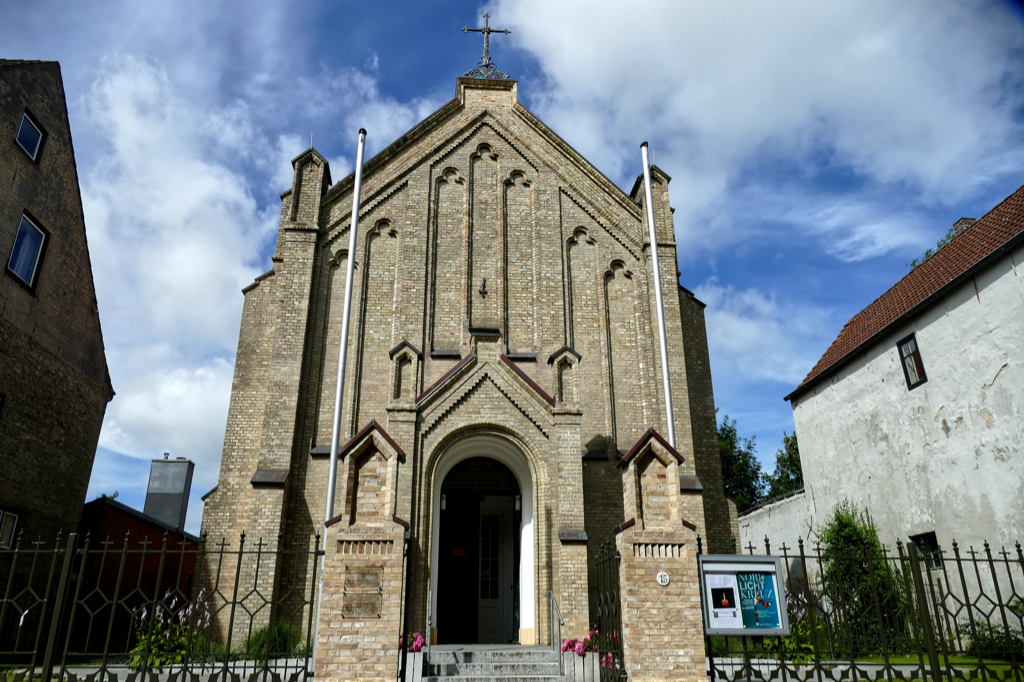
The first Catholics were allowed to settle in Friedrichstadt in 1625. Eventually, when the Jesuits came to the city in 1646, they were allowed to hold services in the so-called Five-Gable House that I’m introducing above.
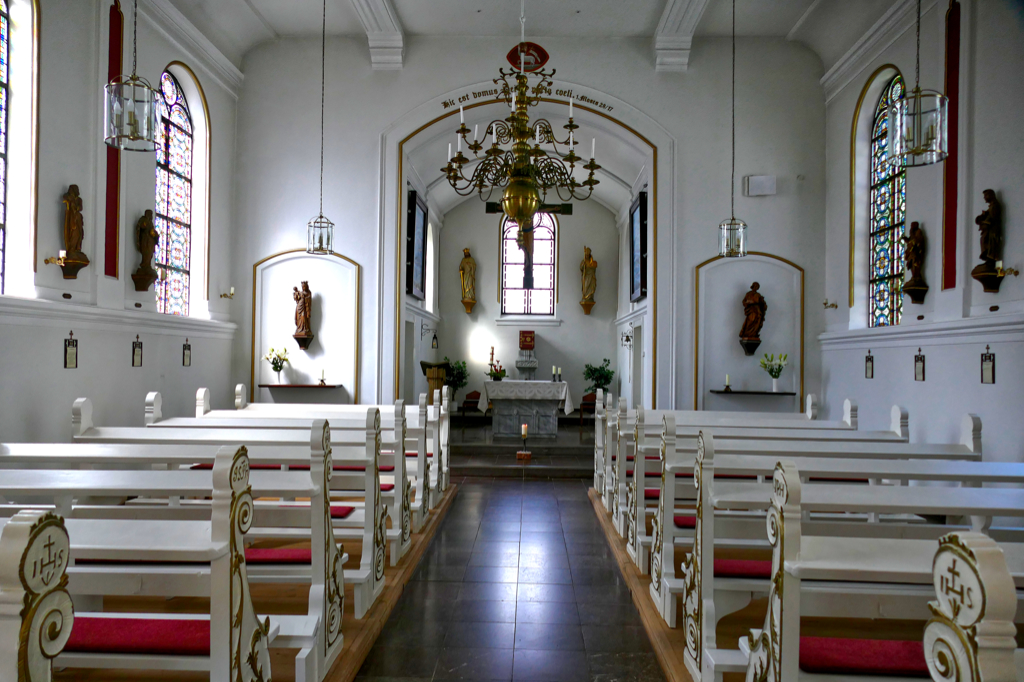
Nevertheless, at that time, the Catholics were not allowed to build their own church. Even by the time, the Jesuits stopped looking after the community in 1793, the congregation did not have its own church yet. Only in 1840, the congregation bought a plot of land from the Friedrichstadt shippers’ guild.
The architect Friedrich Hetsch from Copenhagen built a church there in 1846. Due to misconstruction, it had to be demolished for safety reasons in 1849. However, another church building followed in 1854, this time based on designs by the architect Eggerman from Flensburg.
Former Synagogue
Since 1675, people of the Jewish faith have been allowed to settle in Friedrichstadt. Yet, they had to hold their service at the Remonstrant church. The synagogue was inaugurated only in 1847. The Jewish school and the rabbinate building flanked the synagogue on both sides. At that time, more than 400 people of the Jewish faith lived in Friedrichstadt.
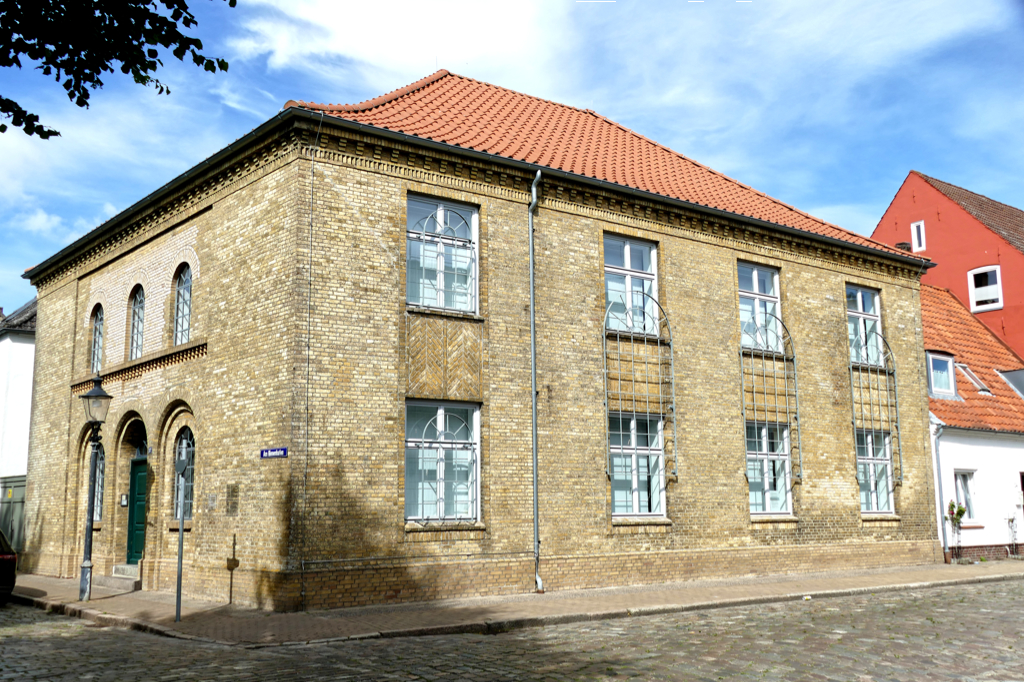
On the morning of November 10, 1938, during the so-called Reichspogromnacht, members of the nazi party set the synagogue on fire. The mayor made sure that the fire was extinguished quickly so that the neighboring buildings wouldn’t catch fire. Eventually, the synagogue was used as a granary. In 1941 it was converted into a residential building for an SS officer.
After extensive remodeling, it was re-opened as a cultural center in 2003. One of its focal points is the town’s Jewish history.
Waters of Friedrichstadt
Canal Cruises
Going on a canal cruise is one of the top activities in Friedrichstadt – and actually a very Dutch thing. Therefore, there are two shipping companies that offer canal cruises.

The Prinzen-Linie starts at the southern edge of the old town, almost opposite the Catholic Church. They have open and covered ships since the weather in northern Germany can get pretty bad.
The company Schröder starts on the northern edge of the old town right on the river Treene.
Normally, the first cruise starts around 11 a. m. and then they go by the hour until approximately 4 p. m. General tickets cost 12 €uros for adults and 8 €uros for kids.
A canal cruise was definitely a nice way to see Friedrichstadt from a different perspective. However, you can also rent motorboats, canoes, or stand-up paddle boards.
Natural Swimming Pool Treene
Since the river Treene is not polluted in any form, you can also bathe and swim there. Actually, there is a small pool area off a stretch of a man-made beach. On the adjacent meadow, you can play games and there is also a playground for the little ones. Or you can just spend a lazy day on the grass, obviously.
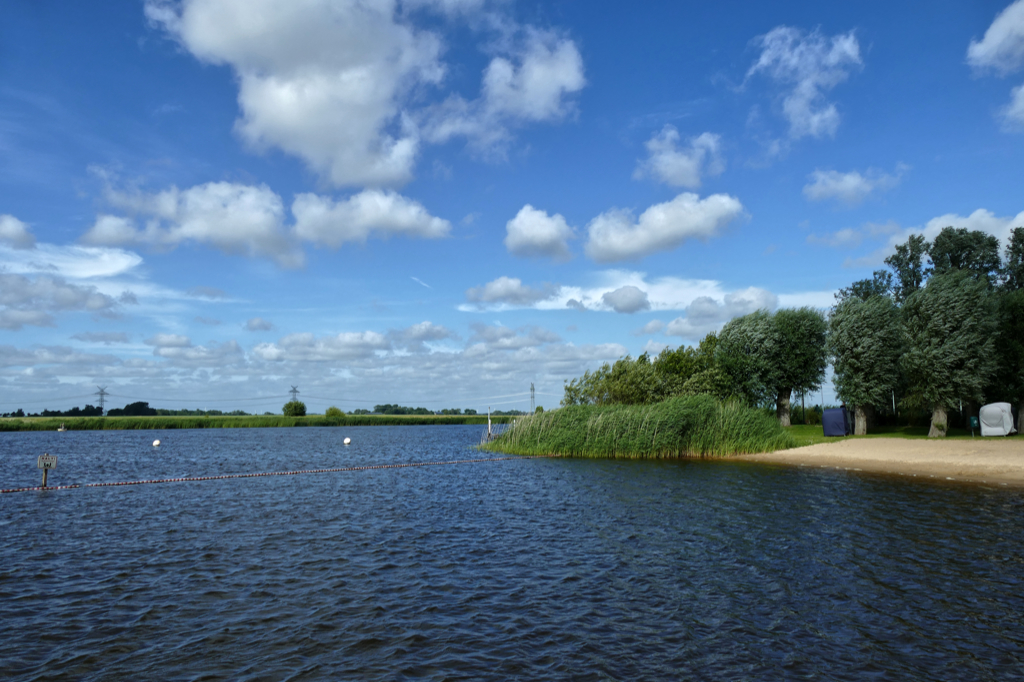
Since there is a very shallow water area, the natural pool is also ideal for families with children. A kiosk will provide you with drinks, ice cream, and fries if you need a refreshment.
The pool is open daily between April and September and can be used free of charge.
Practical Information
How to Get There
The most convenient way to get to Friedrichstadt is by train. You get there for instance from Hamburg or Lübeck in about 2 hours.
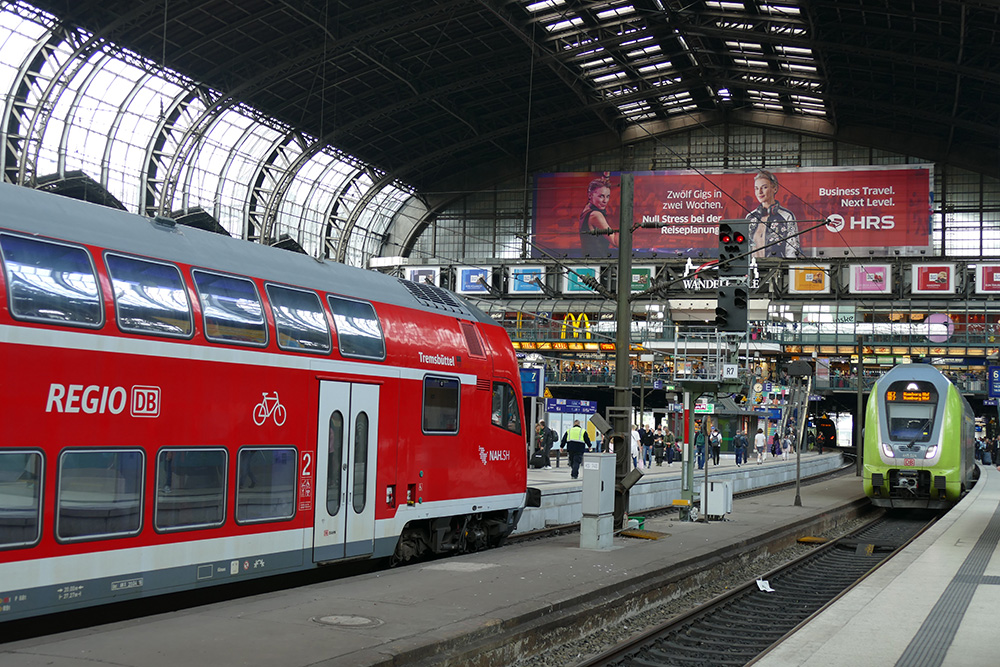
Here’s a special tip for you Germany travellers: For about 25 Euro you can travel an entire day by train within every federal state. However, you are only allowed to take regional trains, not IC or ICE. The best part is: each further person pays only 4 Euro, up to 5 people can travel on one regional day ticket.
Due to its central position, Hamburg is automatically included in tickets for Schleswig-Holstein, Mecklenburg Western Pomerania, and Lower Saxony which includes also Bremen.
Friedrichstadt is in Schleswig-Holstein, and the day ticket for one person is 28 €uros.
The Germany Ticket for 58 €uros
Following the fantastic 9 €uro ticket that allowed nationwide travel for an entire month from June to August 2022, there now is the 58 €uro ticket. For good.
With the 58 €uros ticket, you can travel basically the entire country by regional trains. Those train numbers begin with RE, MET, etc. But remember, it is not valid in interregional trains such as the Intercity (IC) or Intercity-Express (ICE). However, you can also use regular buses, trams, subways, and suburban trains as well as regional express trains everywhere in Germany.
While the 58 €uro ticket is valid throughout the country, it is not linked to German citizenship. It can also be purchased by non-residents. Although it is an annual subscription, it can be canceled on a monthly basis.
Where to Stay
So, you like Friedrichstadt and think just a day trip is not enough? You’re probably right since there is so much to explore and at the same time, there are so many lovely spots where to relax. To help you to spend the night, I’m suggesting these great lodging options that you can easily book on Expedia*.
Where to Eat
As I pointed out, Friedrichstadt is 15 short kilometers from the coast, hence, the most important staple eats are seafood. Also, there is the Dutch’n’Danish tradition which is also fish-related. The most idyllic setting is alongside the canal Mittelburggraben, obviously. You might wanna check out for instance the Holländische Stube, the Dutch Parlor in English, or the Restaurant Ursprung.
Another recommendable eaterie is the Meeresküche Metzner right around the corner from the gabled Dutch rowhouses on the main square.
For a cozy coffee and some cake, the Blumenhaus-Café across from the Paludanus House has lovely seating inside as well as on the sidewalk. If it’s full, try the Prinzenstube Café just a few steps down the street.
You’ll find all these eateries on the map below.
Still need more info? In my post All you need to know before going to GERMANY I’m answering all the questions you might have before and during your trip to Germany. This way, your stay will be smoother and more enjoyable.
Map
Here you can trace the tour on a responsive street map. Clicking on the slider symbol at the top left or the full-screen icon at the top right will display the whole map including the legend.
Pinnable Pictures
If you choose to pin this post for later, please use one of these pictures:

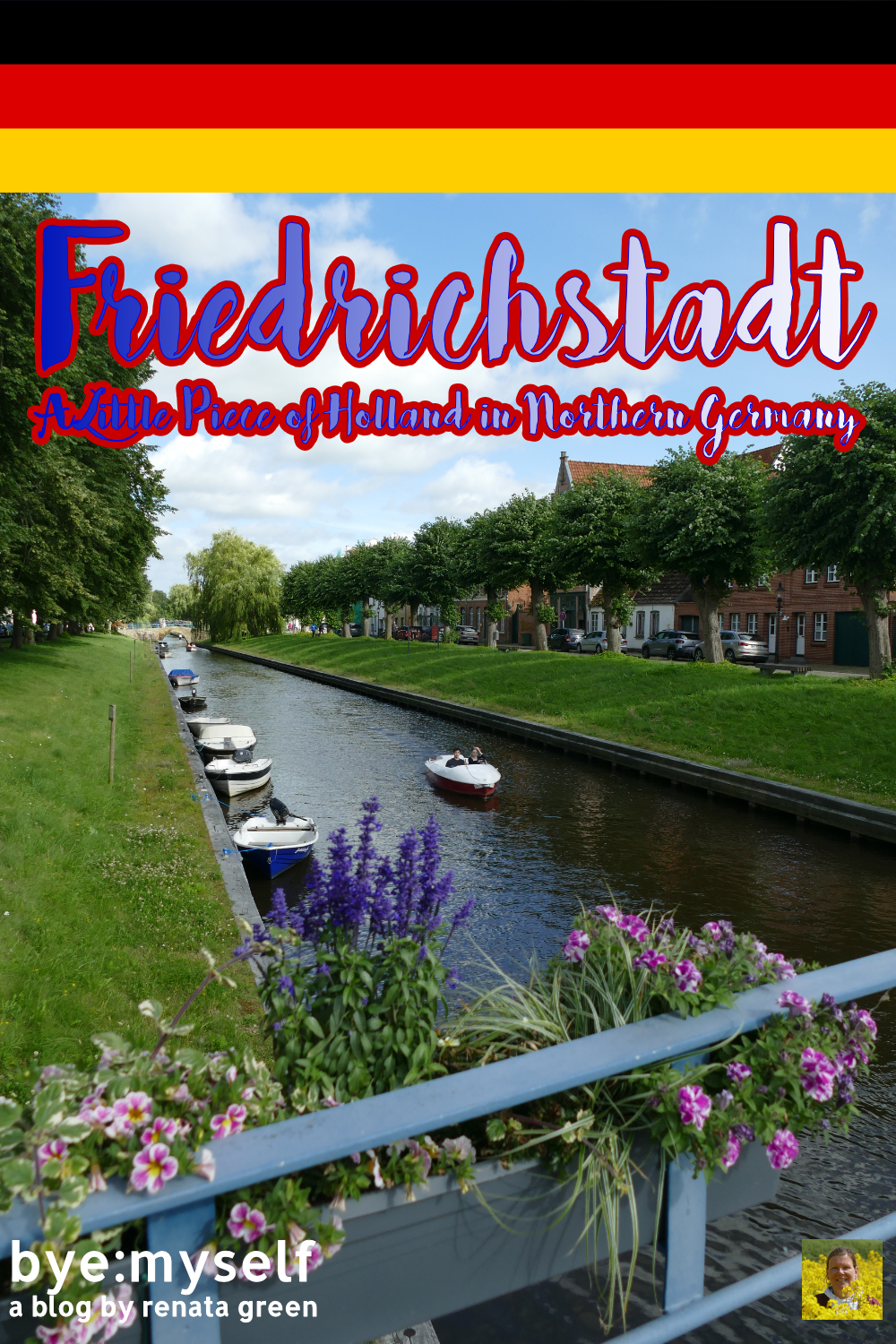
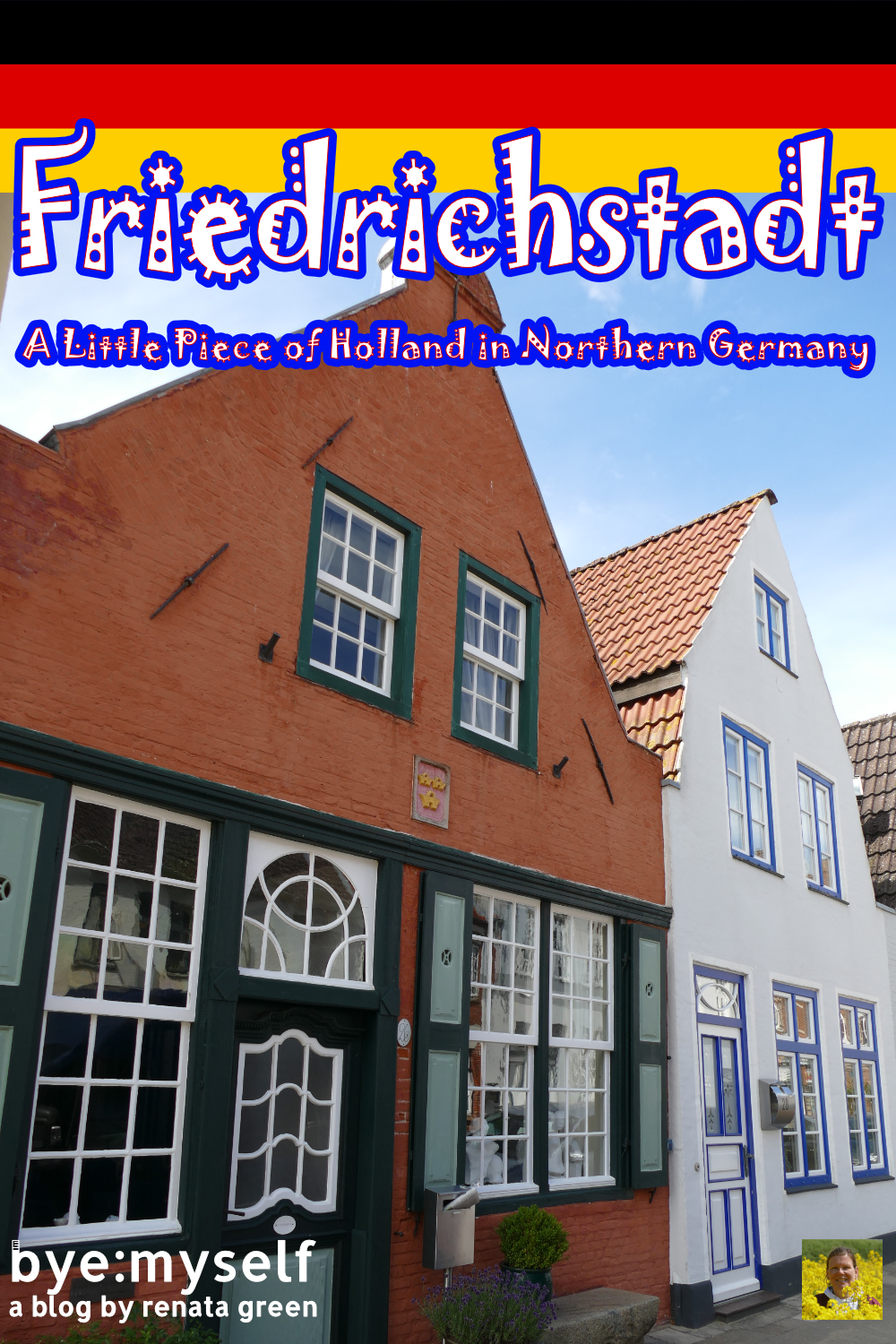



Note: This post is being regularly completed, edited, and updated – last in Mai 2025.
Did You Enjoy This Post? Then You Might Like Also These:
The Island of NEUWERK – where the way is the goal
The Island of BORKUM – West of East Frisia
Best Street Art in BERLIN
BOOMTOWN BREMERHAVEN – Complete Guide
A VAN-TASTIC TRIP to the ISLAND of FEHMARN
24 hours in DUSSELDORF
Weekend in FRANKFURT – 25 Best Things To Do
NordArt 2025: What to Know Before You Visit
Disclaimer: This post contains affiliate links. By purchasing items or making a reservation through those links on my site, not only do you get the best rate. I will receive a small commission that helps to run this blog. Thank you so much for supporting me!
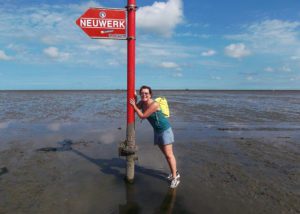

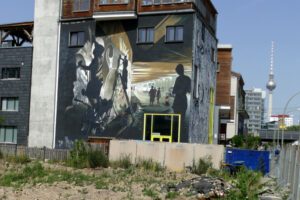
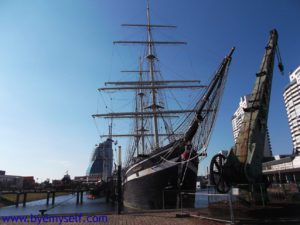
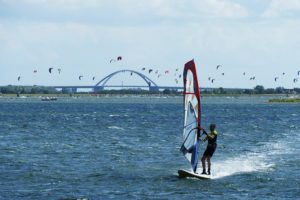

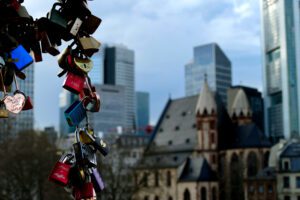

Enjoyed the photos again but this time Dutch and German words are so hard to read 🙂 Silly me as I have to open google for them. Thanks for sharing this, love these places you have always!
Hahaha, yes they are – and they are soooo long, too 😉
Such a beautiful place! Can’t say I’ve heard about it before but it’s definitely something that i should put on my list to visit!
Actually, it’s not very known – a truly hidden gem 😉
it does look a lot like the Holland region! never knew Germany has it in them as well. SO pretty. Germany is a wonderful country to travel in, many interesting places, very clean and cute. Seeing connection of European countries everywhere, even that casually is super fascinating for me
You’re right, there is a great mix of cultures and sceneries 🙂
There are lots of interesting places like Friedrichstadt to visit when we finally build our long visit around Germany. We would certainly plan a canal cruise in this cute city with Dutch heritage. Fascinating to read that there are no churches on the main street to not present one more prominently. Interesting to read about all the different houses. And fun to see the different house insignias.
It’s great to know that there is a Dutch city in Northern Germany. It looks fabulous. I will add Friedrichstadt to my itinerary when will visit Germany next time. The Paludanus house seems impressive. Great tips and guide!
I visited Friedrichstadt with a friend as a day trip from Hamburg. And I vividly remember the cobbled streets, the small churches and the canal! Friedrichstadt is an underrated tourist destination for sure – like so many smaller town in Germany (in the world?).
Totally! And I find that you get a far better feel for a county in those small places than in the globalized metropolis.
The place looks magical. I woulf love to explore it for myself. Germany is one of the countries I love exploring the most. It is so diverse and welcoming
You’re absolutely right, Germany has many different sides – yet, it’s mostly famous only for the Bavarian region 😉
These are some gorgeous photos that really make me want to visit! You really seem to know how to find hidden gems on your travels.
Yes, it’s a mesmerizing place 🙂
Thanks for this & now I have learnt that there is a mini Holland in Germany, will note this whenever I’m travelling to Germany then. Lovely photos shared. Cheers Siennylovesdrawing